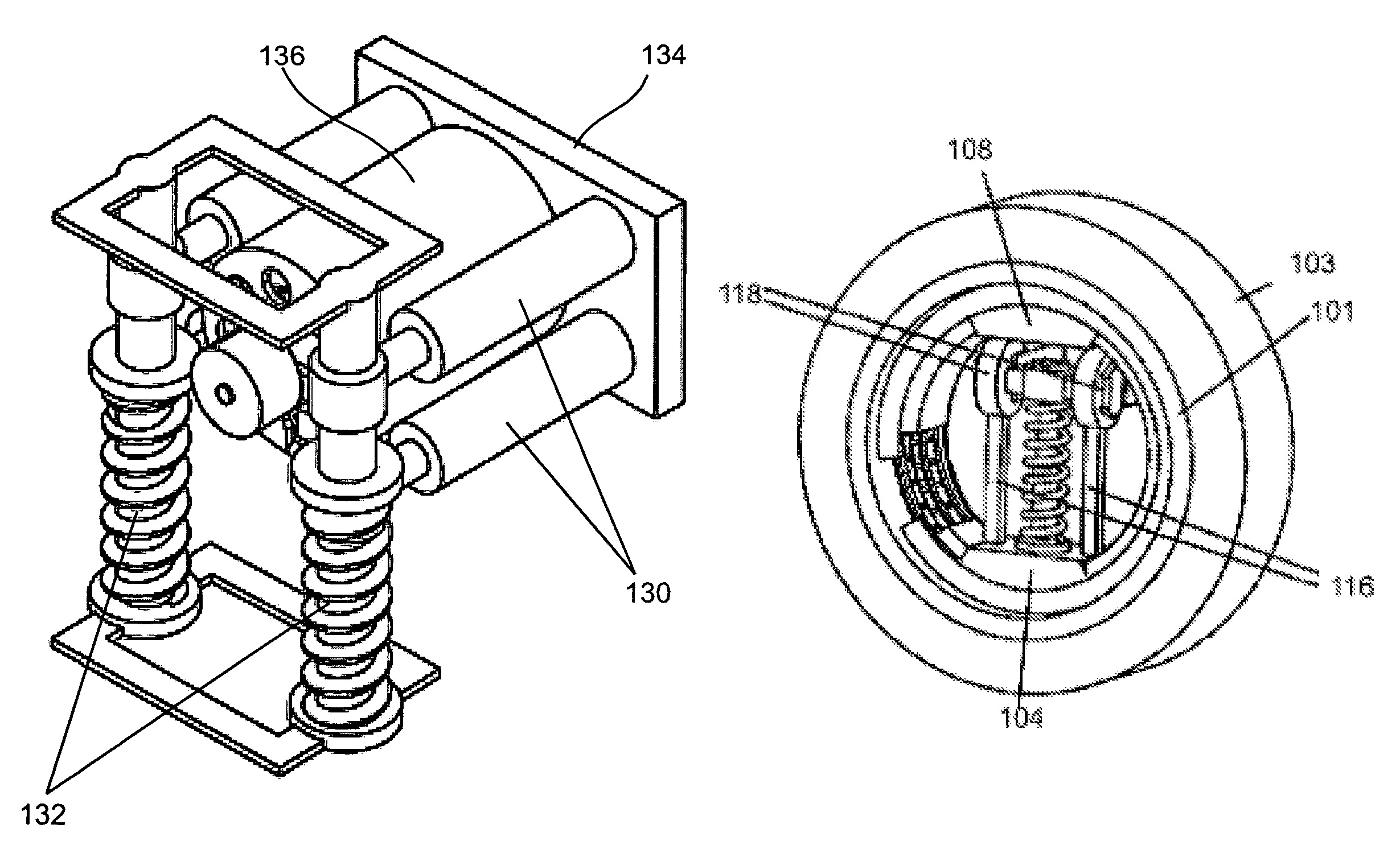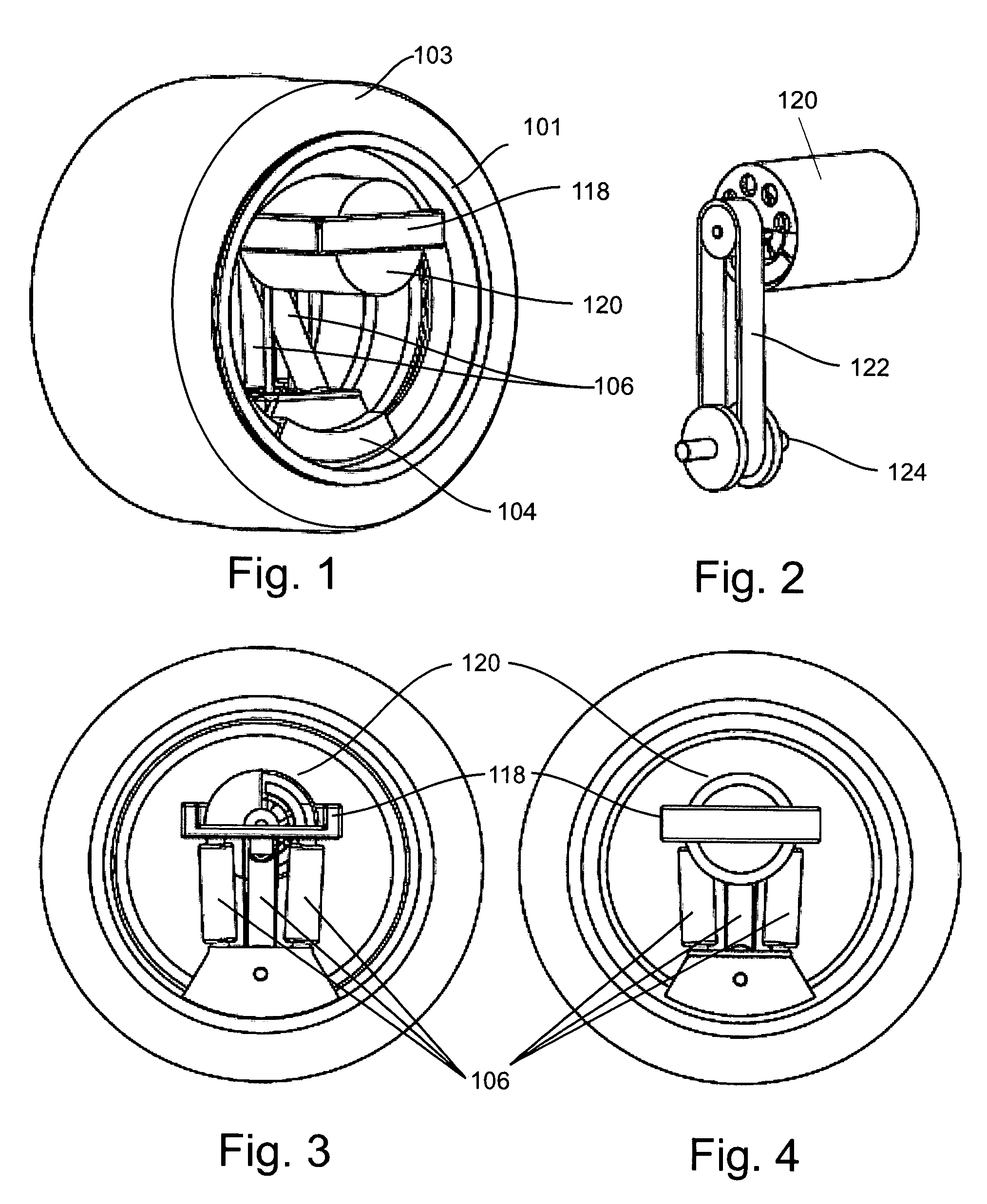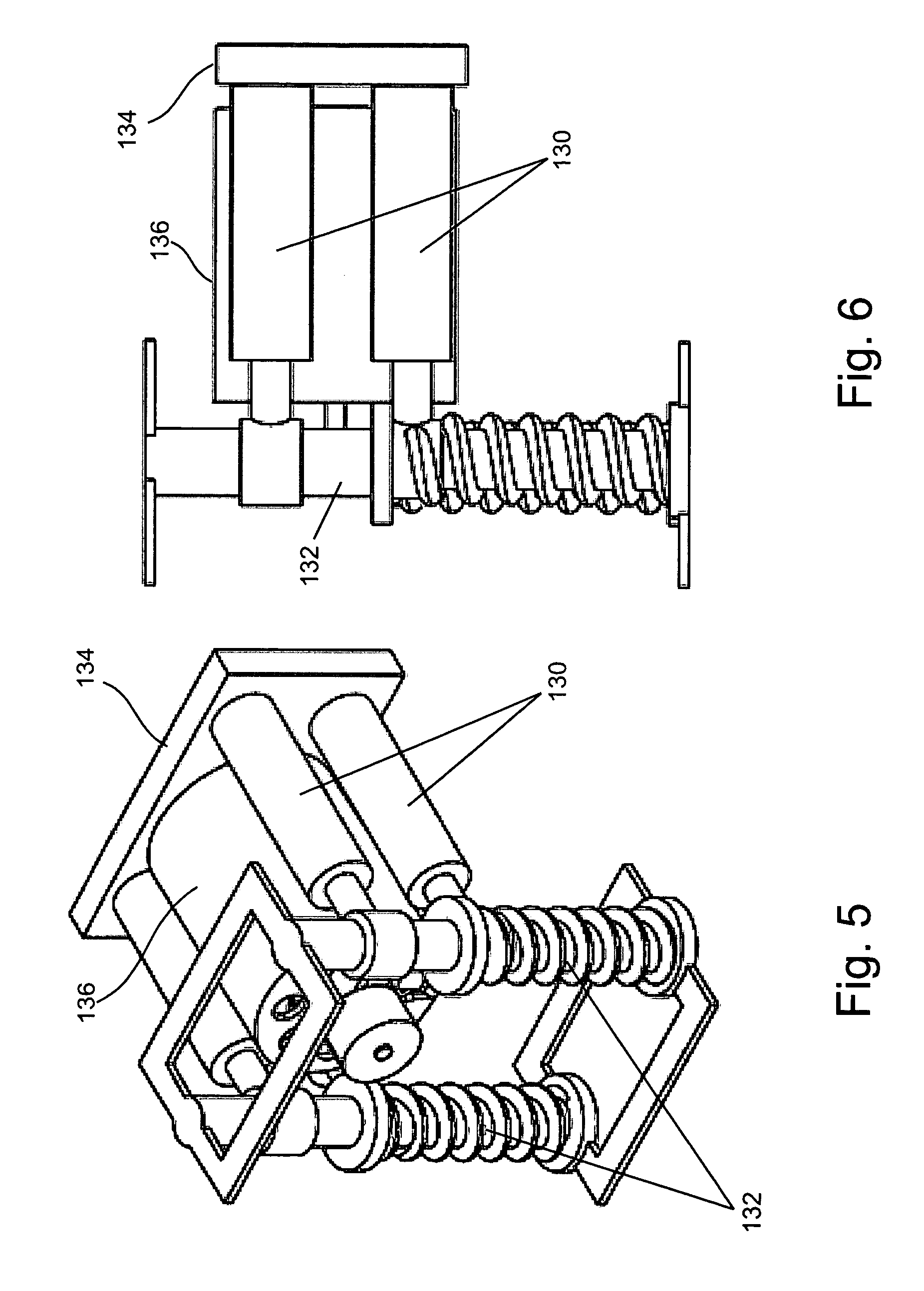Wheel-embedded suspension
a technology of suspension and wheel, applied in the direction of electric propulsion mounting, electric devices, transportation and packaging, etc., can solve the problems of increasing the unsprung and rotational mass, affecting safety and handling, and the conventional suspension used to support the combined hub and motor assembly uses space very inefficiently, so as to simplify the car design, facilitate the effect of speeding up and reducing the weigh
- Summary
- Abstract
- Description
- Claims
- Application Information
AI Technical Summary
Benefits of technology
Problems solved by technology
Method used
Image
Examples
second embodiment
[0072]A second embodiment described in connection with FIGS. 23-29 employs a triangular shaft 201 that transmits power from the motor to the wheel 200 from an electric motor (not shown) transmits power to the shaft 201 via a gear assembly 203 that is rotated by a motor drive gear 202 seen in FIG. 25. The bearing assembly houses three bearings (seen at 205 in FIG. 25) which make contact with the triangular shaft 201, allowing little play between the bearing assembly 203 and the shaft 201 so that power may be transmitted, but allowing the shaft 201 to rotate with the bearing assembly 203 about the shaft axis, and also allowing the shaft 201 to move longitudinally along the axis of the triangular shaft 201. In this way, the shaft 201 can travel along its longitudinal axis relative to gear assembly 203, and hence relative to the motor and chassis, as the wheel rim 204 moves up and down. One or both ends of the triangular shaft 201 form a gear as seen at 206 in FIG. 23 that engages with ...
third embodiment
[0077]A third embodiment shown in FIG. 30 employs three drive gears 303, 305 and 306 arranged in a triangular formation so that one gear 303 (the motor gear) is driven by the motor and transmits power to a middle gear 305 which in turn transmits power to a third gear 306 (the rim gear) which is in constant contact with and engages the crown gear 309 attached to the rim. The angle between the links 311 and 313 which support the gears, and therefore the distance between the motor gear 303 and the rim gear 306, is variable, allowing the gears to be continuously engaged and deliver power during up and down travel of the wheel 315. The motor gear is rigidly attached to the sprung frame member 320 that is supported by the springs 322.
[0078]Off-center Traveling Suspension Axis
fourth embodiment
[0079]As more components are added to the hub or the unsprung portions of the suspension, unsprung mass increases. The arrangements described above suspend the tire and the rim in a way that allows maximum suspension travel while keeping all other components (motor, drive-force transmission, steering, suspension and activators) inside the wheel stable and consequently sprung. The fourth embodiment shown in FIGS. 31 and 32 employ an off-center suspension traveling axis indicated along the dashed line 403 as shown in FIG. 31. The axis 403 sitting near the rim and outside the wheel center axis 405 allows the wheel to travel up and down as the support arm 407 pivots about the off-center axis 403. The advantage of this wheel suspension design is that the suspension axis can easily be used to drive the wheel directly or function as the drive force transmission axis. As seen in FIG. 31, the shaft of the drive motor 411 drives the belt 413 which is coupled to a drive shaft that rotates abou...
PUM
 Login to View More
Login to View More Abstract
Description
Claims
Application Information
 Login to View More
Login to View More - R&D
- Intellectual Property
- Life Sciences
- Materials
- Tech Scout
- Unparalleled Data Quality
- Higher Quality Content
- 60% Fewer Hallucinations
Browse by: Latest US Patents, China's latest patents, Technical Efficacy Thesaurus, Application Domain, Technology Topic, Popular Technical Reports.
© 2025 PatSnap. All rights reserved.Legal|Privacy policy|Modern Slavery Act Transparency Statement|Sitemap|About US| Contact US: help@patsnap.com



